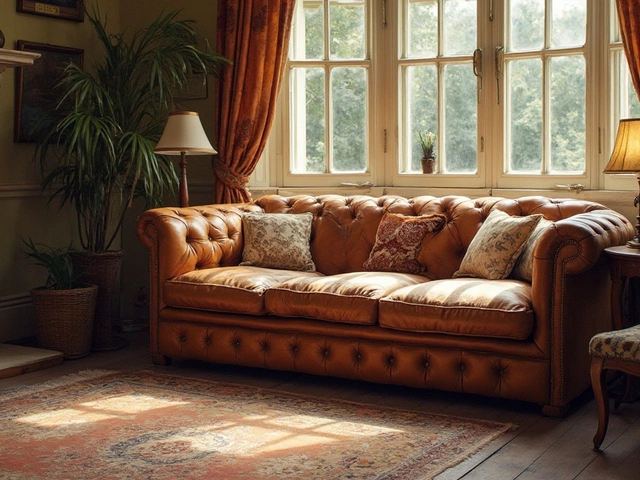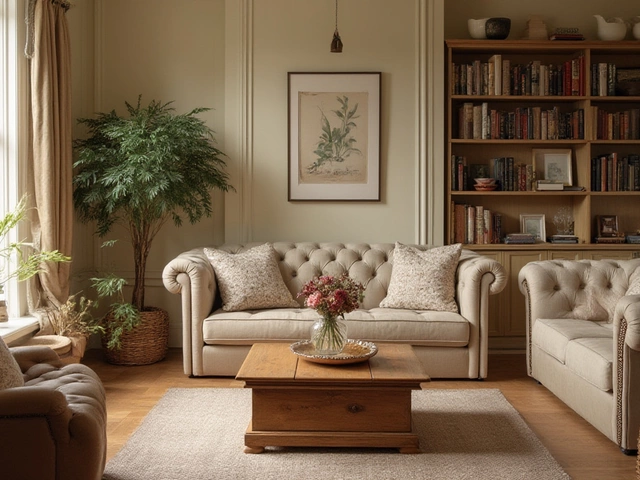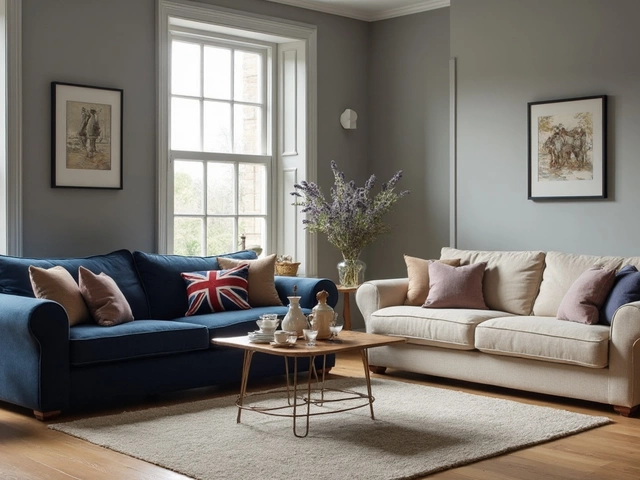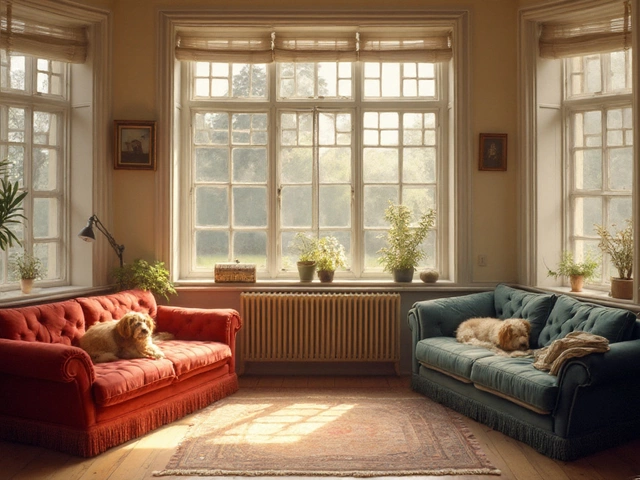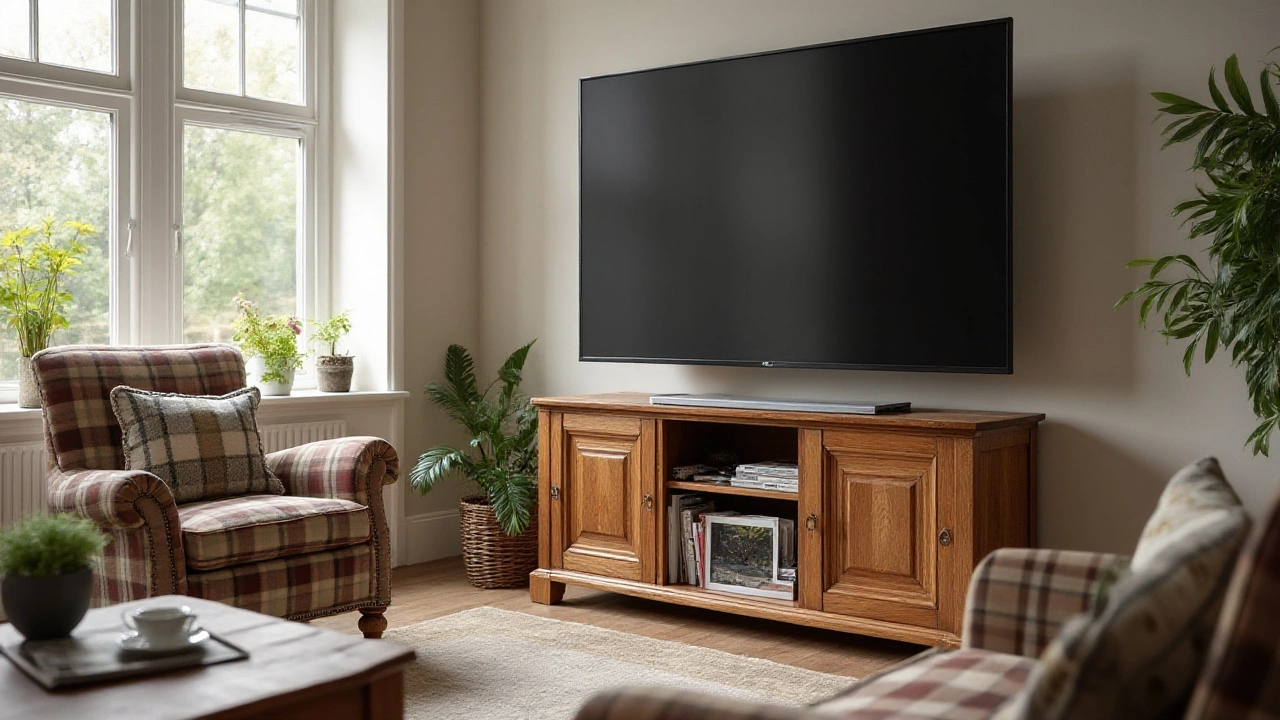 2
Aug,2025
2
Aug,2025
Imagine you just bought a 55 inch TV, unboxed it, and now—you’re stuck. You can’t just throw it on any old table and call it a day. Picking the right size TV stand is way more important than people think. If you go too small, it looks weird and risks toppling over. Too big? The whole room feels out of whack. Not to mention, it’s the anchor for game nights, movie marathons, and that Netflix show you tell yourself you won’t binge in one night. Let’s get the stand right, so the rest falls into place.
Why Getting the TV Stand Size Right Actually Matters
Your TV isn’t just another gadget; it’s the heart of your living room. If you’re like most folks, you’ll spend a ridiculous chunk of your life staring at it. But what often gets lost is the way a TV stand size impacts everything: viewing comfort, safety, style, and even the vibe of your space.
Let’s talk safety first. The average 55 inch TV is about 48 to 49 inches wide, but the feet or legs often sit closer to the edges. That means if you pick a stand that’s too narrow, you risk your TV tipping over—a problem, especially if you have kids or pets. Stats back this up: according to the Consumer Product Safety Commission, there were still over a thousand ER visits in 2023 from TV tip-overs. Don’t be a statistic.
There’s also the look. An oversized TV on an undersized stand just feels... awkward. Plus, a big part of ‘home’ is how it feels. The right-sized stand puts your TV at the proper eye level, which matters a lot more after hours of streaming. Ergonomics studies long ago figured out that a good line of sight reduces neck and eye strain—no need for a chiropractor after your next movie marathon.
Functionally, stands aren’t just about the TV. If you game, stream, or have surround sound, you’ll need space for consoles, blue-ray players, cable boxes, or speakers. The wrong stand means messy cables and nowhere to hide your clutter. And let’s be real: nothing ruins a sleek living room faster than a tangle of wires and stacks of DVDs sitting out in the open.
So yeah, choosing the right TV stand isn’t just about style—it keeps your nights comfy, safe, and the rest of your stuff organized.
The Magic Measurements: What Size Stand Do You Actually Need?
Here’s the question everyone asks: what’s the ideal width for a TV stand if your TV is 55 inches? Oddly enough, that 55 inch label is the length of the screen diagonally—not the width straight across. A 55 inch TV usually measures about 48.5 inches wide (a little more or less, depending on how chunky those frames are this year).
Designers and furniture makers recommend going with a stand that’s at least a few inches wider than your TV on each side. The general rule is: the TV stand should be at least 53 to 58 inches wide for a 55 inch TV, but experts usually say 60 inches is the sweet spot. That gives you 6 inches of buffer—3 on each side—which looks balanced and, more importantly, keeps your TV safe from edge spills or bumps.
Eye-level viewing matters, too. Place your TV so the middle of the screen sits at eye height when you’re seated. For most people, that’s around 42 to 48 inches off the floor. Most TV stands range from 18 to 25 inches tall, but if you have a deep couch or recliner, measure it out! Way too many people end up looking up at their TV, not realizing the best spot is a straight-on gaze—think of it like a movie theater seat that’s smack in the middle instead of front-row neck-craner.
Depth is another piece to consider. Check your TV’s feet or base—some 55 inch models have wide stances needing 12 or even 14 inches of depth, while others get by with about 10. Plus, don’t forget any devices that will live with your TV. You don’t want a stack of old gaming systems poking out from the shelves.
Still unsure? Here’s a quick reference table for common TV sizes and recommended TV stand widths:
| TV Size | Typical TV Width | Recommended Stand Width |
|---|---|---|
| 50 inch | 44 inches | 50 – 55 inches |
| 55 inch | 48.5 inches | 53 – 60 inches |
| 60 inch | 52 inches | 58 – 65 inches |
| 65 inch | 57 inches | 63 – 70 inches |
Aim for the higher end of the range if you want space for speakers or more décor.
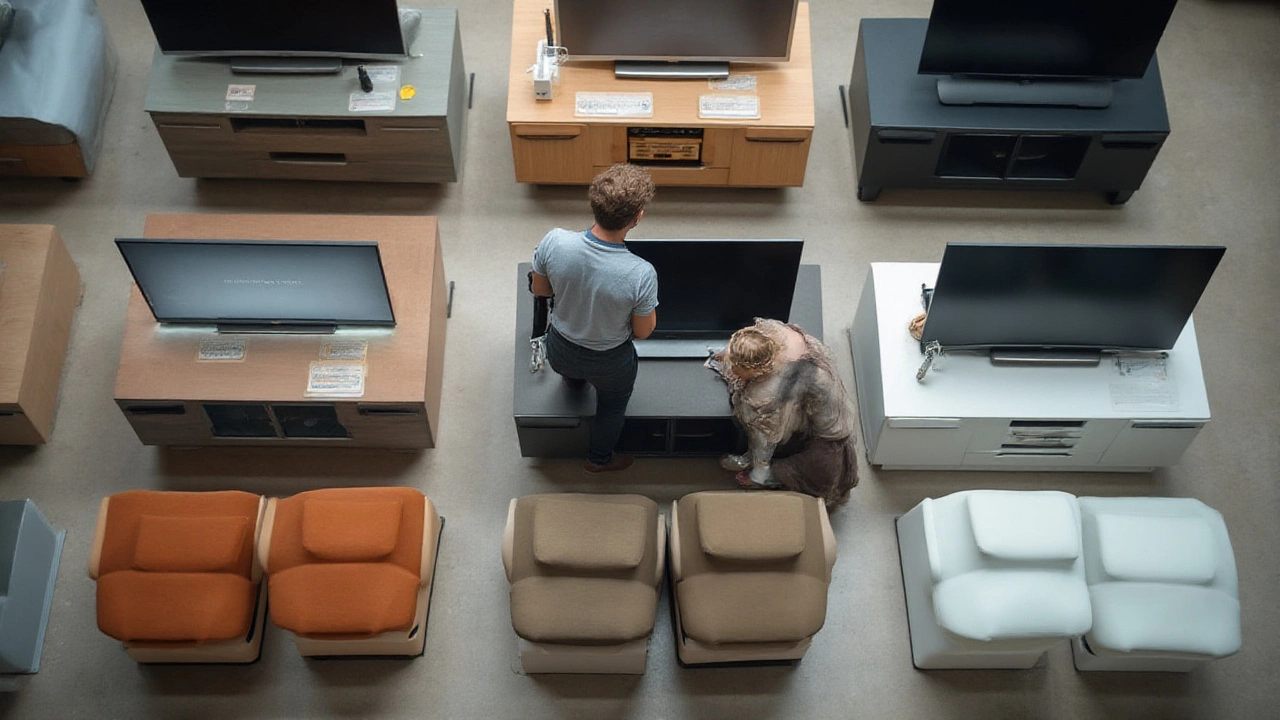
Beyond Size: Smart Features to Look For in a TV Stand
You’ve dialed in the width, but there’s more to TV stands than a sturdy shelf. Materials matter: solid wood looks classic, while engineered wood or metal can be lighter and cheaper. Real wood resists sagging over time—a bonus if you invest in bigger, heavier sets down the road. Glass stands? They look sharp, but they show dust and fingerprints like nothing else, so get your cleaning spray ready.
Ventilation is something people actually forget. Electronics don’t like getting too hot, so stands with open backs or ventilation holes help keep devices from overheating. Pick one with enough shelves or cubbies for your tech—servers, consoles, soundbars. Closed cabinets keep things tidy, but open shelving helps airflow and remote controls work better (no more dancing around waving the remote and hoping for a signal).
If you hate staring at cable spaghetti, grab a stand with cable management holes or channels. Some newer versions even come with power strips and USB ports. Others hide cords inside sliding panels, keeping everything looking sharp from every angle. It makes a difference, especially in open-plan homes where messy wires are out there for everyone to see.
Don’t skip weight limits. Check the TV stand's max weight recommendation—today’s 55 inch TVs may be lighter than their plasma ancestors, but if you stack up serious audio gear or dozens of Blu-ray discs, you could still run into trouble. A quality stand will list weight limits in its specs. Go at least 20% higher than your TV’s weight if you’re adding lots of devices.
Some stands double as storage units. Drawers, shelves, and even hidden compartments help control the chaos. If your living room pulls double-duty (like a home office), consider a stand with extra storage—stash everything from remotes to books within arm’s reach, without the clutter.
Style Choices: Blending Your TV Stand into Your Home
Function first, sure, but style is what makes your setup personal. Today’s TV stands come in all shapes, from rustic to sleek industrial, mid-century modern to downright futuristic. Matching the rest of your room makes the TV setup feel less like a sore thumb and more like a finished design.
If you’re short on space, look for wall-mounted or floating console stands—they make even small rooms feel bigger because you can see more floor. For people with a ton of stuff to stash, go for stands with bookshelves or tall hutches. These days, you’ll find modular options that let you add or remove shelves to fit your life (and your ever-expanding game collection).
Colors are a huge part of mood. Blacks and dark woods offer a cinematic, theater-style look. White or light wood feels breezier, opens up the area, and works well in bright spaces. Glass and metal are popular in urban-styled places, but can look cold if you’ve got a lot of natural wood furniture. Mix it up with plants or soft lighting to keep things inviting.
The newest trend? TV stands that ‘disappear’—they match the wall or blend with your hardwood floors, focusing attention entirely on the screen. Some even use sliding panels to hide the TV when it’s off. Realistically, most homes mix function and form, but a stand that feels like an intentional piece of furniture—not an afterthought—makes guests say, ‘Whoa, nice setup!’
And don’t forget about future-proofing: make sure the style you pick doesn’t just match your current TV. If you plan to upgrade in a few years, leave room (literally and style-wise) for a bigger set.
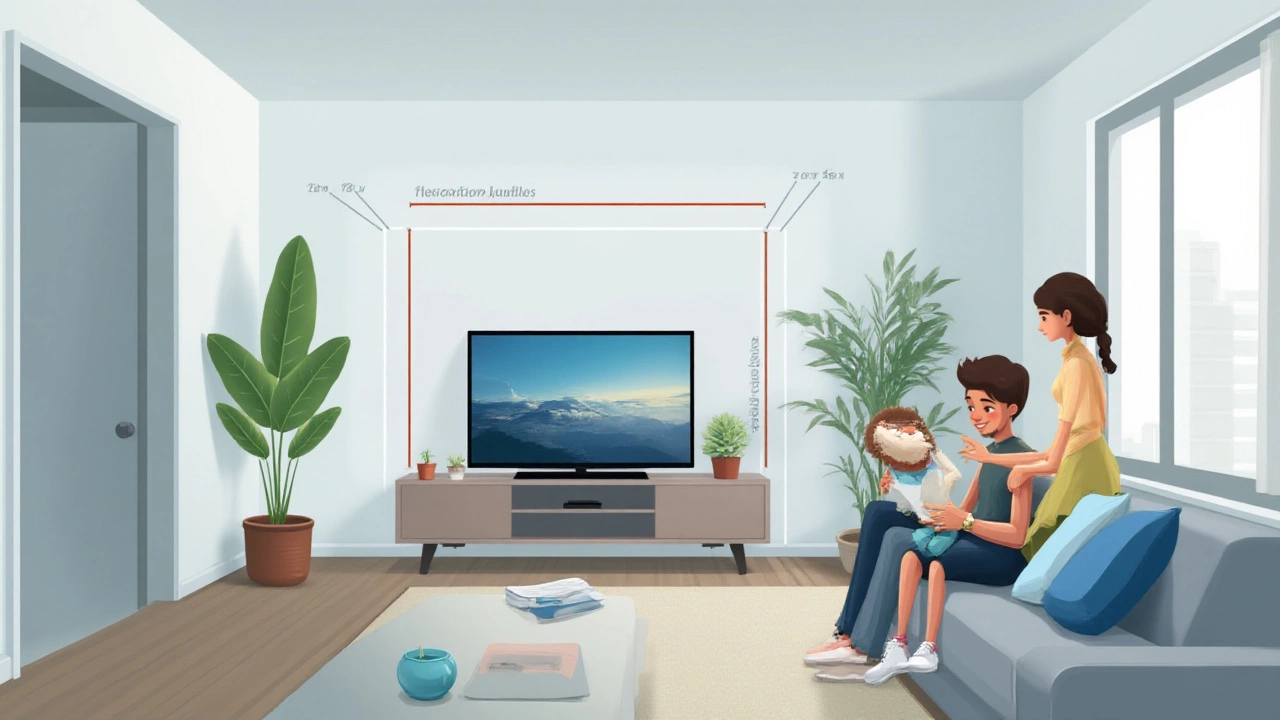
Common Mistakes and Smart Tips to Avoid Them
First up, the classic blunder: measuring the TV’s diagonal instead of its width. TV ads love throwing around big diagonal sizes, but the real world (and your living room) cares about width. Double-check the manual or look it up online—one manufacturer’s 55 inch could be an inch wider than another’s.
Another slip-up is ignoring the shape of the room. Corner stands work for tight spaces, while wide, low stands open up big walls. If you have an odd-shaped room or tricky layout (fireplaces, windows), map it out before you buy. Masking tape lines on the floor give you a feel for fit before the credit card ever comes out.
Height gets overlooked all the time. If your TV ends up too high, your neck pays the price. Google ‘TV mounting fail’ and you’ll see pictures of living rooms that look more like sports bars—don’t be that guy. Use your main couch to figure out the line of sight, factoring in seat height and how you usually sit (slouchers, take an inch or two off).
Not every stand comes assembled. Leaving yourself an hour on a weeknight might turn into wrestling with Allen wrenches late into the night. Check reviews: some stands come with easy labeled pieces, but others have cryptic instructions that feel like an IQ test. Spending a few extra bucks on one with better instructions or pre-assembly might save you serious headaches.
Keep pets and kids in mind. Sharp glass corners are a hazard, and easily-climbed shelves invite disaster. Look for rounded edges or stands that anchor to the wall—one small bracket can easily stop a big accident.
One last tip: style and tech change fast, but the right stand can last through several TV upgrades. Think long-term, and err on the side of slightly bigger and stronger. You’ll thank yourself later, promise.

